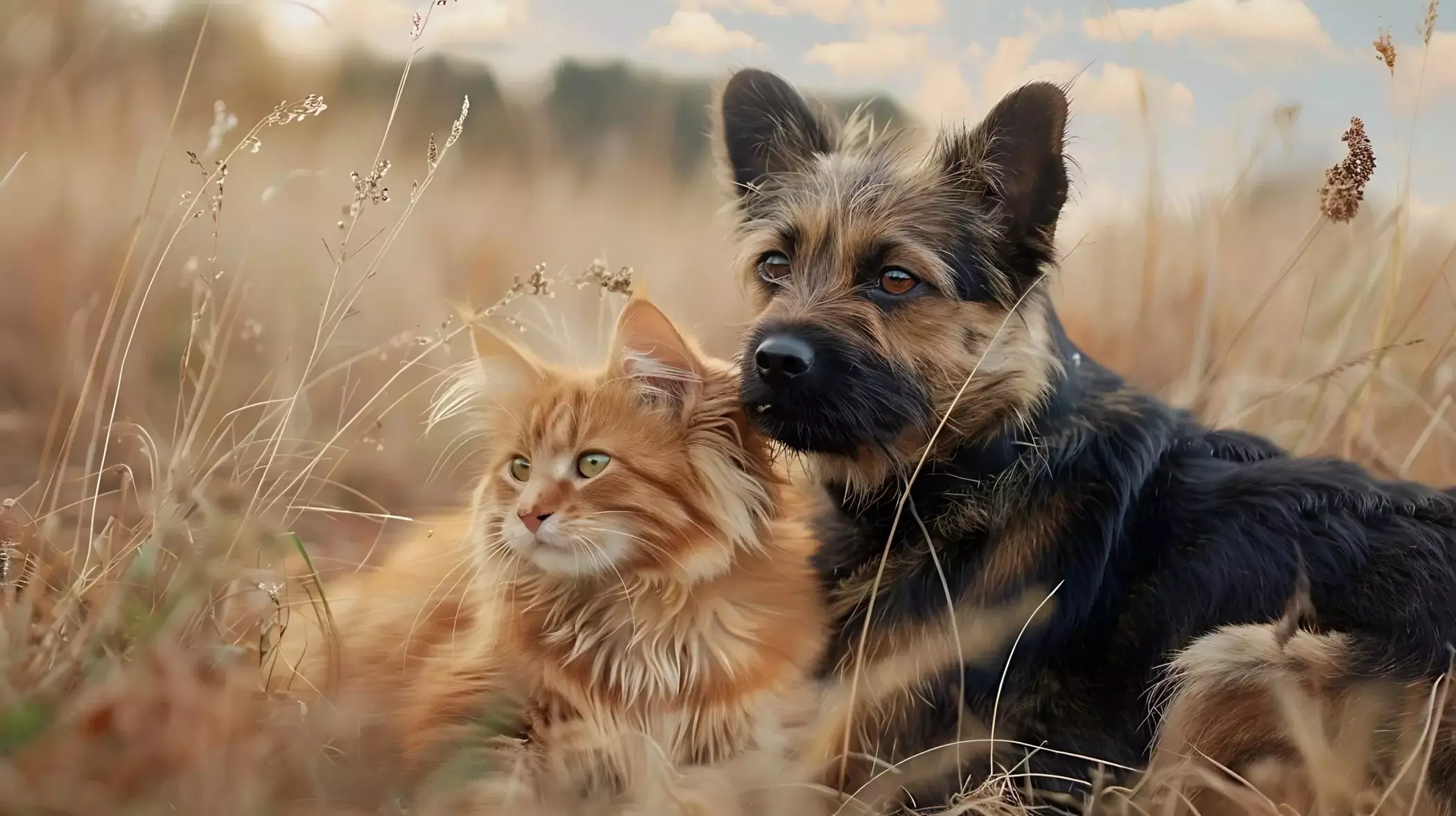When considering the idea of introducing a terrier into a home that already has a cat, or vice versa, many pet owners envision scenes filled with playful interactions and cozy companionship. However, the reality can often be quite different. Terrier breeds are known for their boundless energy and playful exuberance, which may inadvertently stress or frighten a cat that prefers a more serene and controlled environment. Understanding the inherent differences in their temperaments is crucial to creating a harmonious household. This article offers insights and strategies to facilitate a peaceful living arrangement between these two contrasting species.
Preparation: Gradual Introductions and Scent Familiarization
The journey toward a peaceful coexistence begins long before the two animals ever meet face-to-face. Instead of a sudden introduction, start with a period of adjustment where each pet can become familiar with the other’s scent. This can be accomplished through scent swapping techniques, such as exchanging bedding materials or gently rubbing a cloth on one animal and then allowing the other to explore it. This initial step reduces anxiety by introducing the pets to one another in a non-threatening manner, allowing them to assess the ‘new scent’ without the pressure of direct contact.
Once the pets have adjusted to each other’s scents, controlled meetings can begin. Using barriers like baby gates to create a visual but safe environment allows the cat and terrier to observe each other without any risk of confrontation. Limiting these initial meetings to short durations can further diminish stress levels for both animals, facilitating a smoother transition into eventual face-to-face interactions.
Creating Safe Spaces
Establishing designated safe zones for both the terrier and cat is another vital aspect of the integration process. Cats, being more territorial and often skittish, benefit greatly from elevated spaces—such as shelves or tall cat trees—where they can retreat and feel secure. These high perches not only provide a sanctuary where the cat can observe from a distance but also help minimize direct confrontations.
Conversely, secure and comfortable spaces for the terrier should be established where it can feel relaxed and undisturbed. This could include a cozy corner with toys or a designated bed where the terrier can decompress, reducing the likelihood of erratic behavior that could provoke the cat. These separate zones promote feelings of safety and comfort, creating an environment conducive to gradual acclimation.
Effective training is essential for managing the behavior of both pets during these introductions. For the terrier, teaching commands like “sit,” “stay,” and “leave it” will be invaluable during interactions with the cat. Utilizing positive reinforcement techniques—such as treats and praise—can help reinforce calm behavior in the presence of the cat, encouraging amiable interactions rather than confrontational encounters.
Establishing a routine is another component that contributes significantly to the success of this integration process. Regular exercise and play for the energetic terrier can help alleviate excess energy that might otherwise lead to roughhousing or chasing behaviors directed at the cat. Mental stimulation is equally important for both animals; for the cat, interactive toys and climbing structures can distract and engage them, making them less likely to retreat in fear.
Feeding times should be approached with care to prevent potential territorial disputes. Providing distinct feeding areas for each pet can not only deter food aggression but also ensure that both the terrier and cat feel secure while eating. This separation will prevent instances of one pet stealing the food intended for the other, which can heighten tensions.
Additionally, consistency in daily routines fosters a sense of stability in their interactions. Establishing reliable schedules for mealtimes, walks, and play sessions helps both pets know what to expect, reducing anxiety and promoting camaraderie over time.
The Importance of Monitoring and Patience
Throughout the introduction process, vigilance is key. Observe their body language closely; understanding signs of stress or aggression can prevent potential conflicts from escalating. A wagging tail from the terrier might indicate excitement, while a flicking tail from the cat often signals discomfort. By being attentive to these signals, pet owners can intervene early and deescalate potential issues.
Finally, patience cannot be overstated. The journey toward a harmonious household may take weeks or even months. If challenges arise that seem insurmountable, professional help from an animal behaviorist could provide the guidance necessary for a successful integration.
Creating a peaceful coexistence between a terrier and a cat requires a thoughtful approach punctuated by patience, training, and awareness. By fostering a nurturing environment that respects the needs and boundaries of both pets, you can cultivate a loving and dynamic relationship that enriches your home for years to come.


Leave a Reply